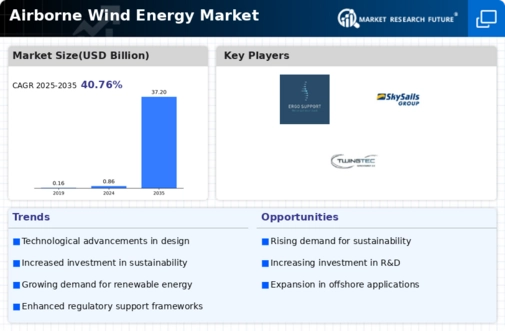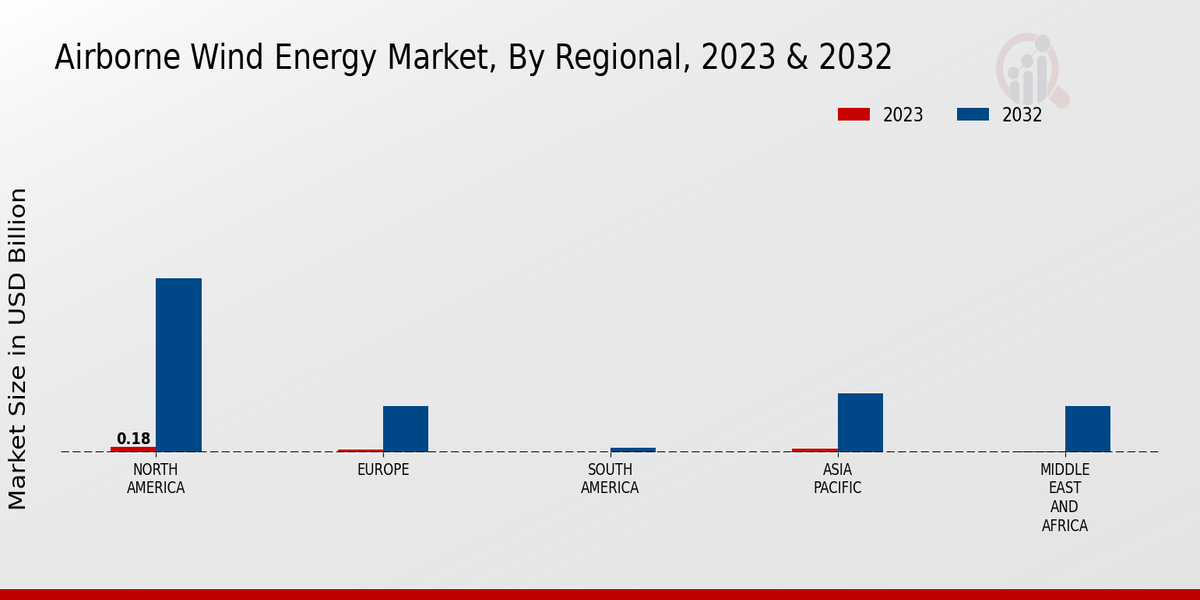Rising Energy Demand
The Global Airborne Wind Energy Market Industry is significantly influenced by the rising global energy demand. As populations grow and economies develop, the need for sustainable and reliable energy sources becomes increasingly pressing. Airborne wind energy, with its potential for high energy yield and minimal land footprint, offers a compelling solution to meet this demand. The market is expected to expand rapidly, with projections indicating a growth from 0.86 USD Billion in 2024 to 37.2 USD Billion by 2035. This surge reflects the urgent need for innovative energy solutions that can support the growing global population while addressing environmental concerns.
Market Growth Projections
The Global Airborne Wind Energy Market Industry is poised for remarkable growth, with projections indicating a substantial increase in market size. The market is expected to expand from 0.86 USD Billion in 2024 to an impressive 37.2 USD Billion by 2035. This growth trajectory suggests a robust compound annual growth rate (CAGR) of 40.83% from 2025 to 2035. Such projections reflect the increasing recognition of airborne wind energy as a viable and sustainable energy source. The anticipated market expansion is likely to attract further investments and innovations, reinforcing the industry's position within the broader renewable energy landscape.
Technological Advancements
The Global Airborne Wind Energy Market Industry is witnessing rapid technological advancements that enhance the efficiency and effectiveness of airborne wind energy systems. Innovations in materials, such as lightweight composites and advanced aerodynamics, are enabling the development of more efficient airborne wind energy systems. These advancements not only improve energy capture but also reduce operational costs. As a result, the market is projected to grow from 0.86 USD Billion in 2024 to an estimated 37.2 USD Billion by 2035, reflecting a compound annual growth rate (CAGR) of 40.83% from 2025 to 2035. Such technological progress is pivotal in driving the adoption of airborne wind energy solutions globally.
Environmental Sustainability
The Global Airborne Wind Energy Market Industry is increasingly driven by the global emphasis on environmental sustainability. As nations strive to meet climate goals and reduce carbon emissions, airborne wind energy presents a viable alternative to traditional fossil fuels. The technology harnesses high-altitude winds, which are typically stronger and more consistent than surface winds, thereby maximizing energy production while minimizing land use. This aligns with global efforts to transition to renewable energy sources, making airborne wind energy an attractive option. The growing awareness of environmental issues is likely to propel investments and innovations in this sector, further enhancing its market potential.
Government Policies and Incentives
Government policies and incentives play a crucial role in shaping the Global Airborne Wind Energy Market Industry. Many countries are implementing supportive regulations and financial incentives to promote renewable energy technologies, including airborne wind energy. These initiatives often include tax credits, grants, and subsidies aimed at reducing the financial burden on developers and investors. For instance, various nations have set ambitious renewable energy targets, which create a favorable environment for the growth of airborne wind energy projects. Such governmental support is essential for fostering innovation and attracting investments, thereby driving the market forward.
Investment and Funding Opportunities
Investment and funding opportunities are vital drivers of the Global Airborne Wind Energy Market Industry. As the technology matures and demonstrates its potential for high returns, venture capital and institutional investors are increasingly drawn to the sector. The anticipated growth trajectory, with a CAGR of 40.83% from 2025 to 2035, signals a lucrative market for investors. Furthermore, partnerships between private companies and public entities are fostering innovation and accelerating the development of airborne wind energy projects. This influx of capital not only supports research and development but also facilitates the commercialization of new technologies, thereby propelling market growth.















Leave a Comment